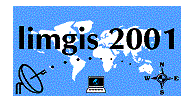


GEOGRAPHIC
Maps
Maps
are representation of features on the surface of earth drawn to scale. Map scale
is the ratio of the distance between any two points on a map to the actual
distance between the points on the ground.
Map
scale may be expressed in
·
by a statement.
·
by a numerical
statement.
·
by a graphical
section.
Classification
of Maps
Maps are mainly classified based on
· Scale
· Contents and purpose
Based on the scale, they are classified as
· Cadastral Maps or Revenue maps
· Topographical maps: Maps larger than 1:25000 scale.
· Geographical maps: Maps on scale smaller than 1:250000. They are further divided into
· International map of the world (IMW).
· World aeronautical charts (ICAO).
· India and adjacent countries, etc.
· Atlas maps (They are of very small scale).
· Wall maps.
Based on contents and purpose, they are classified into physical and cultural maps.
Map
Numbering
The map numbering systems used in India are:
· The International system (CIM)
· India and adjacent Countries (IAC) System
CIM system
This system is used for international map on 1:1 million scale. Each sheet covers an area of 40 latitude x 60 longitude. The geographical position of the sheet is defined by two letters and a number. The first letter is N or S depending on whether the sheet is north or south of the equator. Next letter after the N or S indicates latitude of sheet alphabetically with the capital letters in succession of each 40 band. Numbering starts from 1800 longitude and goes from west to east, the number changing after 60 longitude, i.e. a map showing 00 to 40N and 00 to 60E will have a numbering of NA1.
IAC system
This is the system followed by the Survey of India maps. Each sheet is bound by 40 latitude and 40 longitude. The sheet numbering starts from NW corner 400 latitude N and 440 E as sheet no.1 and increases from North to South. Sheets falling in the sea are not numbered. Sheets covering India are numbered from 39 to 58. The sheets are called 1/M (or 1 Million) sheets.
The 1/M sheets are further sub-divided into 16 equal parts of 10 x10. The sheets are in 1:25000 scale. These sheets are numbered from A to P and each grid is called by the sheet number followed by the alphabet i.e. for the 1/M sheet 57, sixteen components are 57A to 57P.
|
A |
E |
I |
M |
|
B |
F |
J |
N |
|
C |
G |
K |
O |
|
D |
H |
L |
P |
57- 40 x 40 on 1:1M scale
Shaded cell shows 57G of scale 1: 250000.
The 10 x 10 map (degree sheet) is again subdivided into sixteen equal parts - each of fifteen minutes of latitude and longitude in extent. These sheets are numbered from 1 to 16 (e.g.: 57G/1, 57G/2 to 57 G/16) and on the scale 1: 50000 scale maps.
|
1 |
5 |
9 |
13 |
|
2 |
6 |
10 |
14 |
|
3 |
7 |
11 |
15 |
|
4 |
8 |
12 |
16 |
57 G - 10 x 10 on 1: 250 000 scale
Shaded cell shows 57 G/12 of scale 1: 50000.
The 1:50000 sheet is further divided into four equal parts of 7.5' latitude x 7.5' longitude. The sheets are numbered A/1/NW, A/1/NE, A/1/SW, A/2/SE and scale is 1:25000.